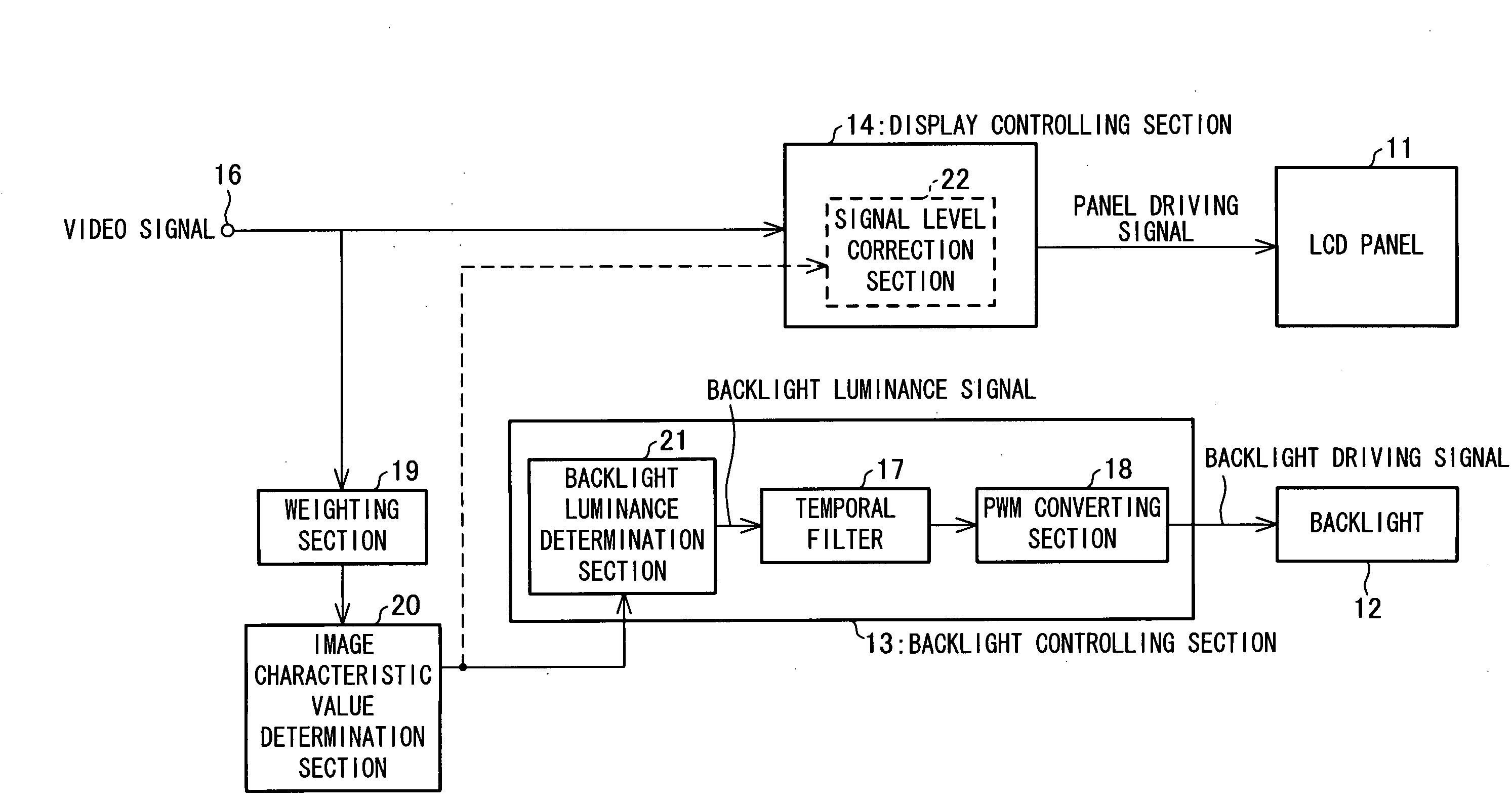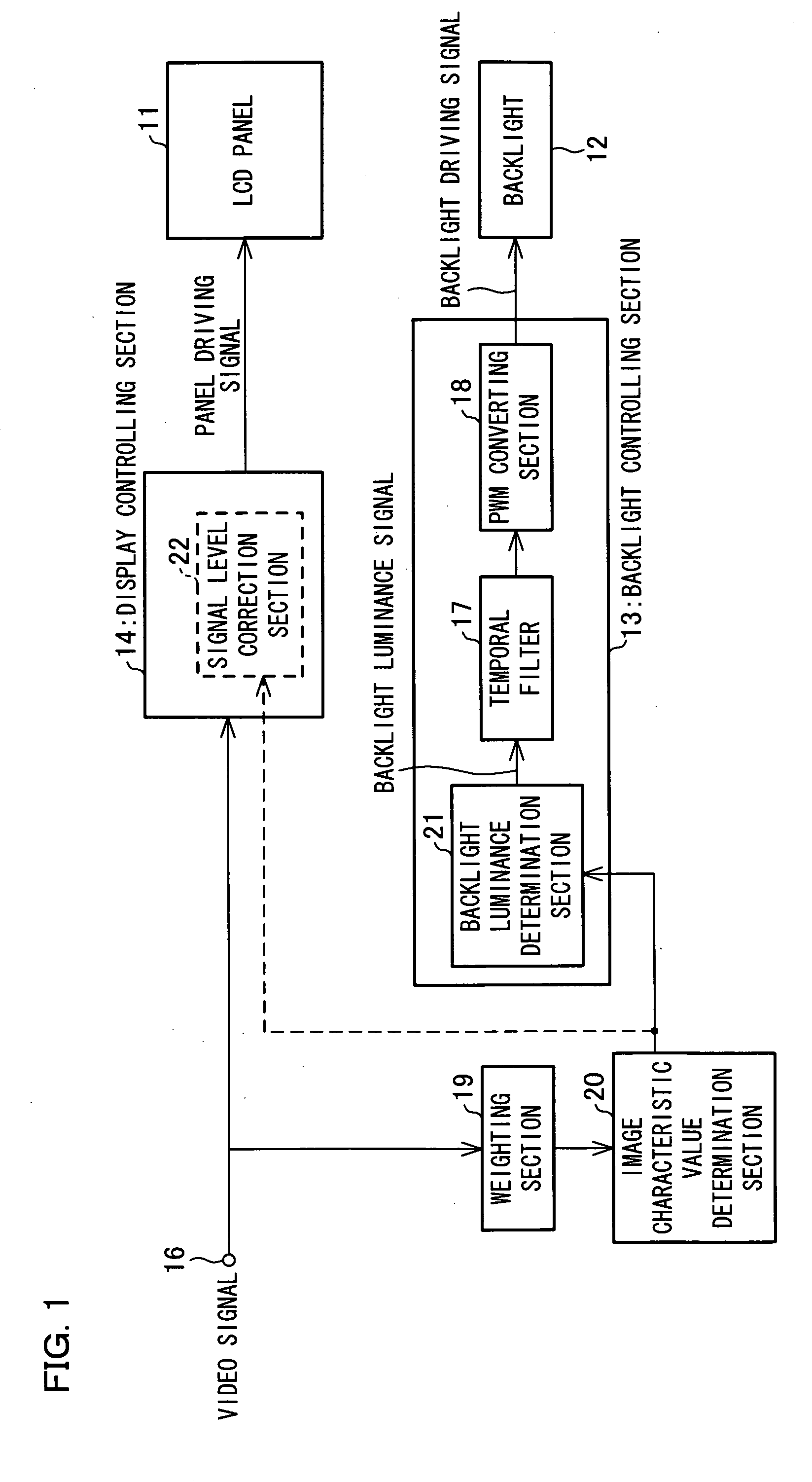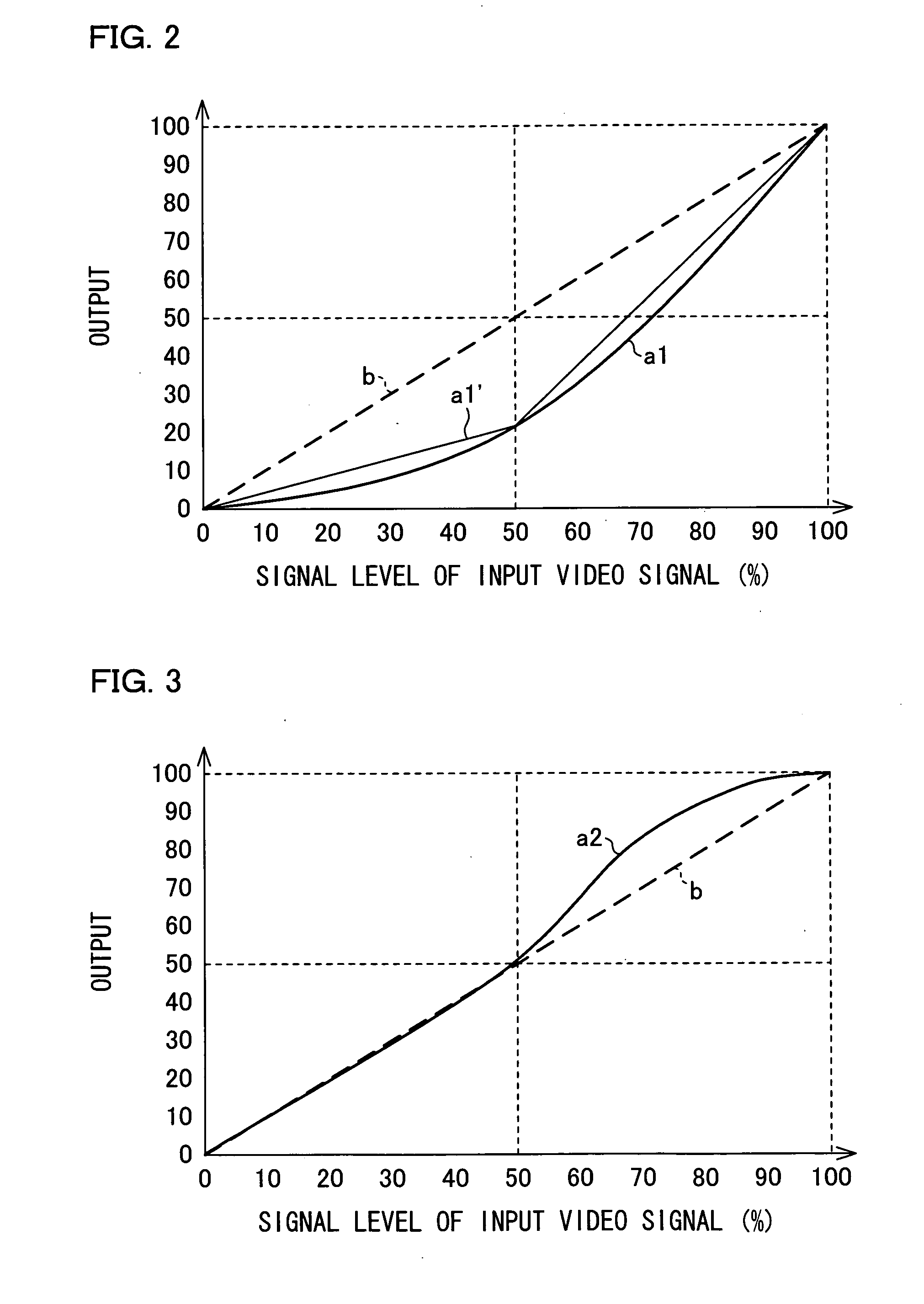Image display device
- Summary
- Abstract
- Description
- Claims
- Application Information
AI Technical Summary
Benefits of technology
Problems solved by technology
Method used
Image
Examples
embodiment 1
[0066]An image display device of Embodiment 1 of the present invention is described with reference to FIGS. 1 through 10, 11(a), 11(b), and 11(c).
[0067]FIG. 1 is a block diagram illustrating a structure of the image display device of Embodiment 1 of the present invention. As illustrated in FIG. 1, the image display device includes an LCD panel (a light modulation device) 11, a backlight (a light source) 12, a backlight controlling section (a light source controlling section) 13, a display controlling section 14, a weighting section (a weighting means) 19, an image characteristic value determination section (an image characteristic value determining means) 20, and an input 16.
[0068]A video signal to be displayed on the LCD panel 11 is inputted from the input 16 in the form of, for example, a YPbPr signal. The display controlling section 14 performs control in order to display the video signal on the LCD panel 11 and outputs the video signal to the LCD panel 11 as a panel driving sign...
embodiment 2
[0110]An image display device of Embodiment 2 of the present invention is described below with reference to FIGS. 12 and 13. For the sake of simplicity, members with same functions as those of members of Embodiment 1 are given the same symbols and descriptions for the members are omitted.
[0111]FIG. 12 is a block diagram of a structure of the image display device of Embodiment 2 of the present invention. As illustrated in FIG. 12, the image display device additionally includes a luminance sensor 23 whose measurement output is inputted into a backlight luminance determination section 21′ in a backlight controlling section 13′. The backlight controlling section13′ is different from the backlight controlling section 13 only in that the backlight controlling section 13′ includes the backlight luminance determination section 21′ instead of the backlight luminance determination section 21.
[0112]The luminance sensor 23 is for the measurement of luminance around the image display device. A m...
embodiment 3
[0118]An image display device of Embodiment 3 of the present invention is described below with reference to FIGS. 14 through 16, FIG. 17(a), and FIG. 17(b). For the sake of simplicity, members with same functions as those of members of Embodiments 1 and 2 are given the same symbols and descriptions for the members are omitted.
[0119]FIG. 14 is a block diagram of a structure of the image display device of Embodiment 3 of the present invention. As in FIG. 14, the image display device additionally includes a histogram determination section (a means for determining histograms) 26. A histogram determination output determined by the histogram determination section 26 is inputted into the weighting section 19.
[0120]The histogram determination section 26 is for dividing luminance information of one frame of an input video signal (a pixel value) into a plurality of luminance information classifications and determining histogram distribution corresponding to each luminance information classifi...
PUM
 Login to View More
Login to View More Abstract
Description
Claims
Application Information
 Login to View More
Login to View More - R&D
- Intellectual Property
- Life Sciences
- Materials
- Tech Scout
- Unparalleled Data Quality
- Higher Quality Content
- 60% Fewer Hallucinations
Browse by: Latest US Patents, China's latest patents, Technical Efficacy Thesaurus, Application Domain, Technology Topic, Popular Technical Reports.
© 2025 PatSnap. All rights reserved.Legal|Privacy policy|Modern Slavery Act Transparency Statement|Sitemap|About US| Contact US: help@patsnap.com



